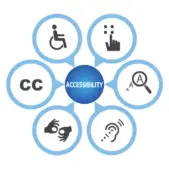As online shopping continues to dominate the retail landscape, eCommerce security is more important than ever—for both businesses and consumers. While digital storefronts offer unmatched convenience, price comparisons, and access to reviews, they also come with risks like data breaches, fraud, and counterfeit products.
With consumers increasingly cautious and savvy about online scams and privacy violations, it’s essential that your eCommerce experience inspires trust right from the first click. Avoiding these UX-related red flags can help you build credibility and drive conversions.

Absence of Modern Security Indicators
As an online retailer, you are asking your customers to trust you with their personal data. In return, you should be offering them an assurance of your own. Customers are less likely to complete purchases on sites without clear eCommerce security indicators. Security indicators they may look out for include:
- SSL/TLS Encryption. Your site should use HTTPS to encrypt all data transmission between the user’s browser and the server. Users may look for the “https://” prefix in the URL and a lock icon in the browser.
- PCI DSS Compliance. Users may check that your site is compliant with the Payment Card Industry Data Security Standard (PCI DSS), which sets security requirements for handling credit card data.
- Secure Payment Processing. Display a badge or seal confirming that your site uses a reputable, PCI-compliant payment processor to handle financial transactions.
- A Clear Privacy Policy. Ensure that you have a clear and comprehensive privacy policy explaining how you collect and protect customer data.
- Security Seals. Display security seals from trusted third-party auditors like Verisign or TRUSTe. These indicate that your site is independently verified as secure.
- Two-Factor Authentication. Offering two-factor authentication as an option to add an extra layer of security for customers to share sensitive personal and payment information means you must offer visible signs that their data is protected.
Today’s users know what to look for:
- SSL/TLS Encryption: Your site must use HTTPS to encrypt data. Users expect to see the padlock icon in the browser address bar—it’s the bare minimum of trustworthiness.
- PCI DSS Compliance: Clearly communicate that your payment flow complies with Payment Card Industry Data Security Standards.
- Trusted Payment Providers: Integrate and display recognizable secure payment options like Stripe, Shopify Secure, Apple Pay, PayPal, and Visa Secure.
- Biometric or Passwordless Authentication: Let customers opt in to passwordless logins via fingerprint, Face ID, or secure email links—a smoother, safer user experience.
- Clear Privacy Policy: Ensure your privacy policy is up-to-date and transparent, especially with laws like GDPR, CCPA, and CPRA in play.
- Modern Trust Signals: Old seals like Verisign or TRUSTe no longer hold weight. Instead, offer real-time support chat, trustpilot reviews, and visible refund/return guarantees.
Weak Social Proof or Digital Presence
In 2025, shoppers expect to validate your business across multiple channels. An active and consistent social media presence signals legitimacy and openness. Make sure to:
- Link to verified social media profiles from your homepage and product pages.
- Highlight customer reviews and user-generated content to build trust.
- Encourage engagement with loyalty programs, referral rewards, and influencer collaborations to show you’re not just a faceless storefront.
Unclear Terms and Conditions
Today’s shoppers don’t just skim the fine print—they actively look for it. Vague or hard-to-find terms raise red flags, especially for first-time buyers. Make sure your:
- Shipping rates and delivery windows are transparent and easy to find.
- Return and refund policies are clear, reasonable, and fair.
- Subscription details, if applicable, are disclosed before checkout—no hidden auto-renewals.
- Contact and support info is accessible via multiple channels, including chat, email, and phone.
No Protection Against Bots or Fraud
Security isn’t just about protecting customers—it’s about protecting your platform, too. Failing to implement fraud detection can damage your reputation and your bottom line. In 2025, that means:
- AI-driven fraud monitoring: Use machine learning tools that track suspicious behavior patterns in real time.
- Bot detection tools: Implement CAPTCHA alternatives (like hCaptcha or invisible honeypots) to prevent fake signups and card-testing fraud.
- Multi-device session monitoring: Watch for unusual login locations, devices, or behavior to automatically trigger protective actions.
Prioritize UX-Driven Security to Build Trust
Security and user experience are no longer separate concerns—they go hand-in-hand. Every click, form, and checkout step should reassure users that their data and money are safe with you. An elegant, trustworthy experience leads not just to conversions, but long-term brand loyalty.
If you’re looking to build a brand that consumers can trust, the experts at UpTop can help. At UpTop, we help businesses create outstanding digital experiences that boost conversions and seize market opportunities. Our teams specialize in UX strategy, product design, and software development. Contact us today for customized solutions to help you take your online business to the next level.


